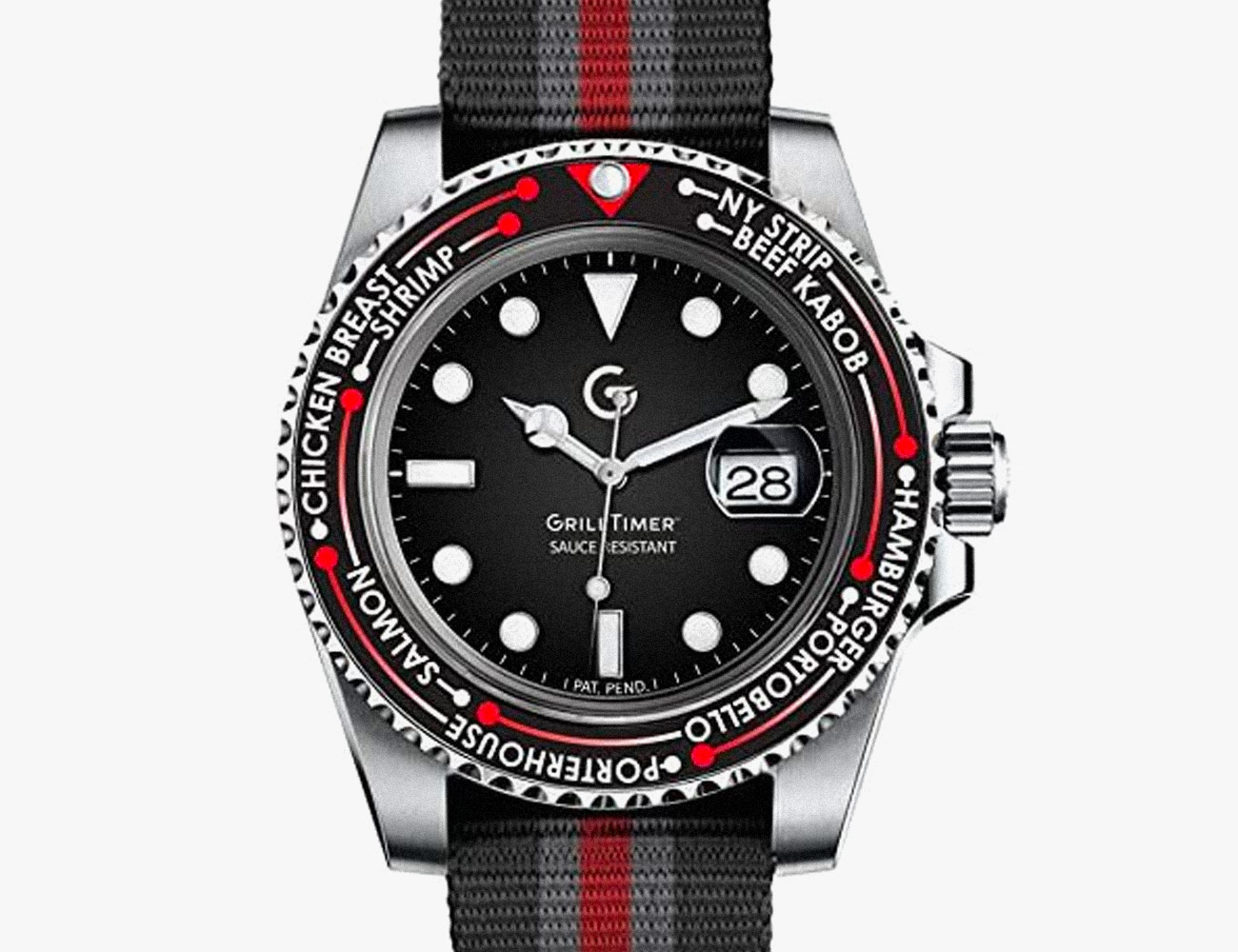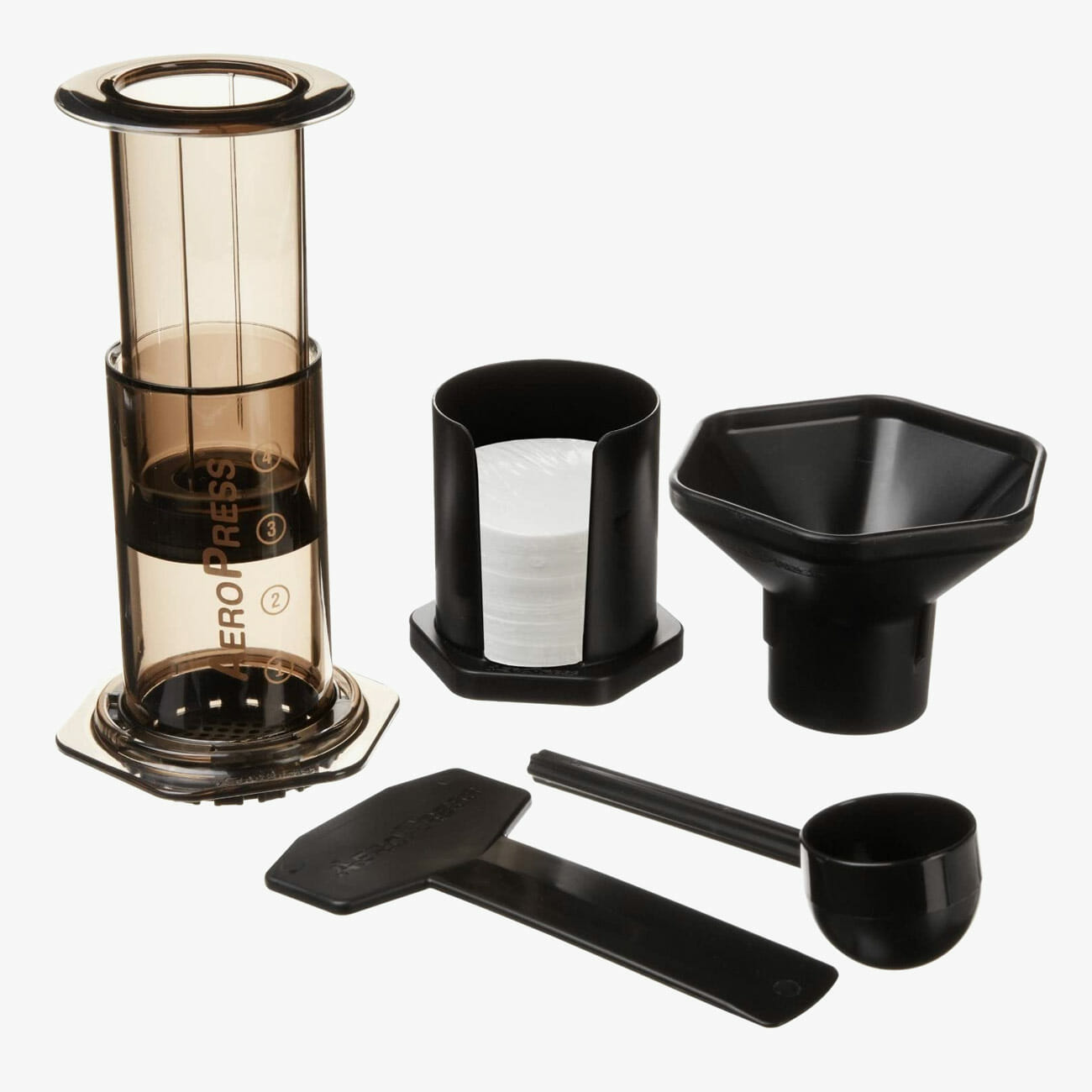Decoding vintage Rolex is such a dark art, it seems like the subject for a class in a Harry Potter book. There’s no vitriol more hateful than that which surrounds the posting of a mid-20th century Rolex for sale on a watch forum — you think you’ve heard it all in the high school cafeteria until the insults begin flying when somebody mistakes a Mk. IV Red Sub dial for that of a Mk. III. How dare he? What foolishness is this?!
If you, too, enjoy vintage watches and wish to understand the source of all the passionate debate that is specifically vintage Rolex, then we have the perfect book for you. It’s called “The Vintage Rolex Field Guide,” from an Instagram account called @morning_tundra, and it’s pretty damn awesome. It’s chock full of tables, serial numbers, illustrations and details — so many details that one could conceivably rely on it for the great majority of one’s vintage Rolex knowledge (barring actually handling the watches, of course, which is also necessary). But if you’re the type of person who cares about the difference between a 1680 and a 16800 (let alone a 1016 and a 6294), then this book is meant for you.
“Many watch fans are frustrated with books in this genre,” @morning_tunda explains (the author would prefer to keep his identity private). They read like corporate brochures, with lots of gushy superlatives and photos of museum-grade watches nobody can buy. Even if you have $17M to blow on a stainless steel chronograph, finding an affordable and practical book is really challenging. This was designed to fill a niche and satisfy an appetite for facts and data.”
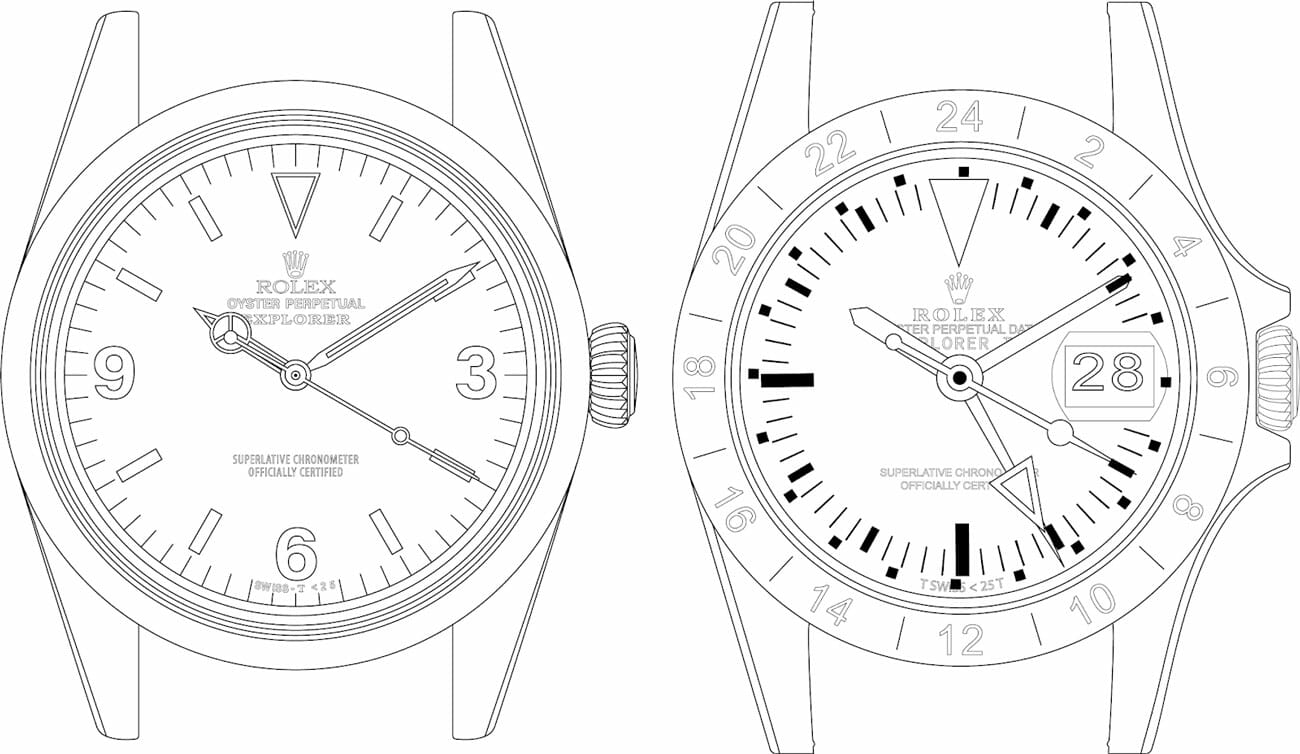
Having worked briefly in vintage watch sales and being moderately obsessed with vintage Rolex, I was eager to see if I could fill the gaps in my knowledge using the Field Guide, and sure enough, the book delivered — I now still don’t know the difference between a Mk. IV and a Mk. III Red Sub dial, but the information has been conveniently collated and arranged for me in print form!
My personal inability to differentiate Red Sub dials aside, the Field Guide is a godsend for someone who’s trying to make sense of the arcane and seemingly endless rabbit hole that is vintage Rolex. How long did they make the 5513 again? What is a Tropic crystal? Was Hans Wilsdorf a dark wizard? It’s all in there. In fact, it’s got so much information packed into it, one wonders where @morning_tundra found the time to write it.
“I wrote this in the early mornings before the kids got up, and late at night after everyone was in bed,” the author explained. “This began as a side project which I was determined to finish without interfering with my other personal and professional obligations. It turned into something that a lot of younger watch enthusiasts will find helpful. What I didn’t expect was the level of interest from professional watchmakers and dealers. When young buyers start negotiating with data, they sit up and pay attention. Good data will cut straight through the sales BS.”
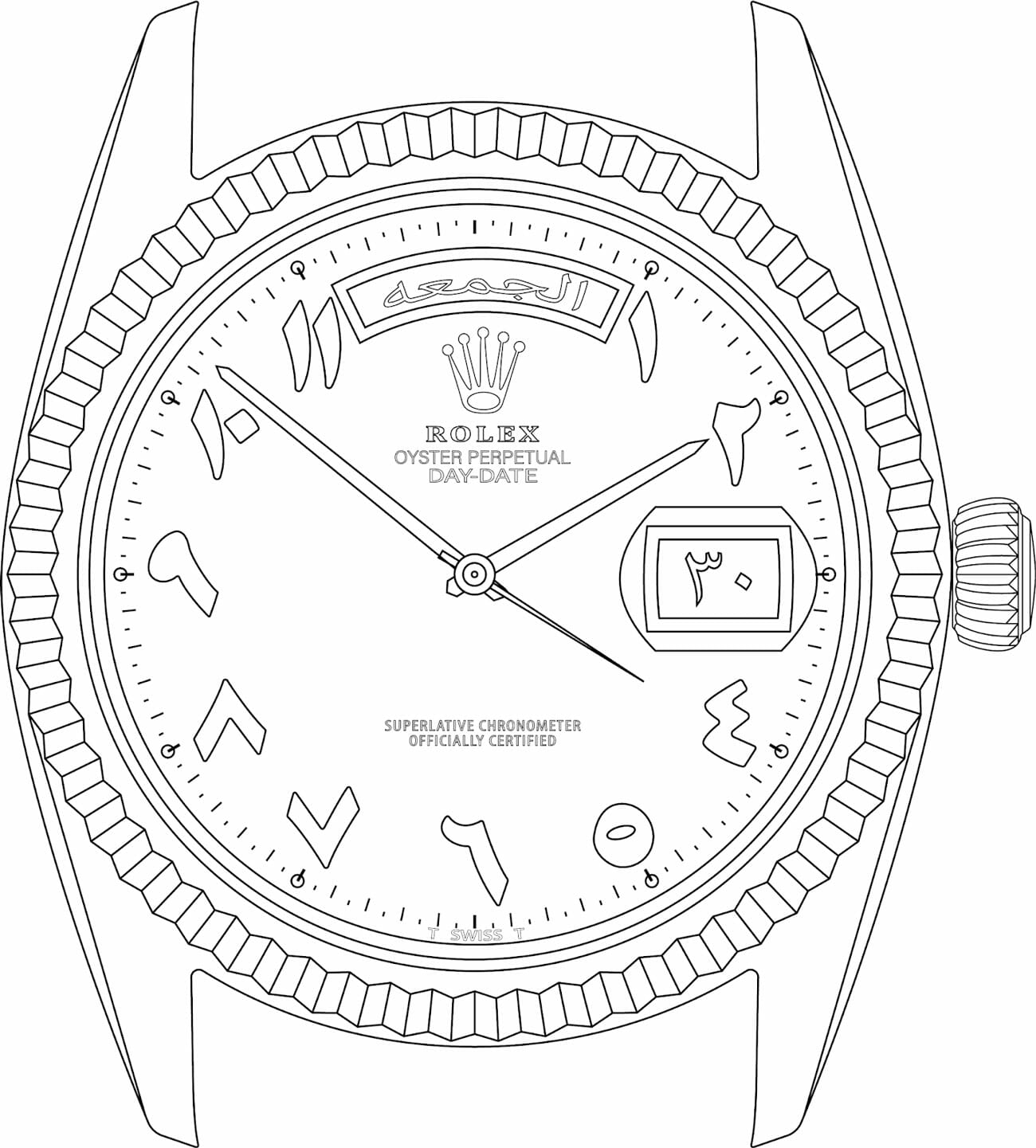
The book is roughly 250 pages long and divided into several sections, including an extensive introduction detailing different periods in Rolex history, the Oyster case and crown, and the Perpetual movement. Next there’s a section detailing authenticity and “correctness,”; a section on acquiring and buying vintage Rolex; a useful timeline of case serial numbers; a section on assessing condition of vintage models; several sections detailing different Rolex models (further divided into “Antique and Pocket Watches”; “Professional Tools”; “Classics and Crossovers”; and “Formal Dress”); a section on bracelets; a section on movements; and finally, a section on accessories.
And @morning_tundra wasn’t content to simply amass myriad data from dealers, collectors and others without a robust proofing process. “This book is what academics would call secondary research. I’ve processed and analyzed a ton of data from auction catalogs, to forum posts. I crowdsourced analytics support from Amazon Mechanical Turk to validate what I found. I wrote and produced the book myself (typesetting, cover design, illustrations) and distribute it through the mainstream book distribution channels (Ingram Media). This is the same channel big book stores order through. So I’m going toe to toe with the big boys. It’s really shaping up to be a David & Goliath story!”
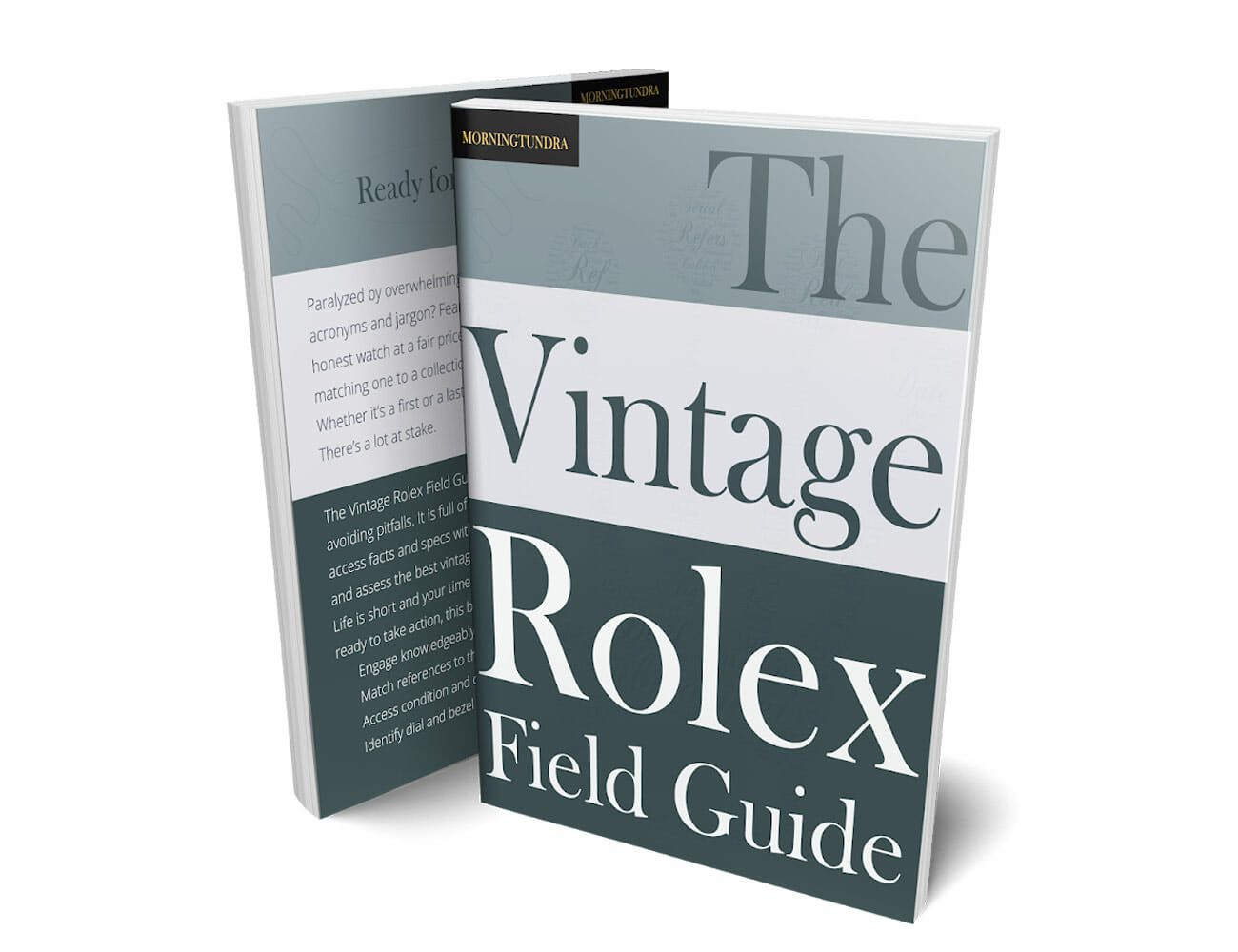
There are so many graphs, timelines, illustrations and images that you wouldn’t be remiss for mistaking The Vintage Rolex Field Guide for a high school physics textbook — except that you actually want to read this tome. @morning_tundra is so convinced that you’ll agree with me, he’s even offering 30-day return periods on the print version of the book, should you not be satisfied with it. But trust us — whether you order a copy in print or PDF form, this is a book that every vintage watch lover (and especially every vintage Rolex lover) is going to want to have quick access to.


